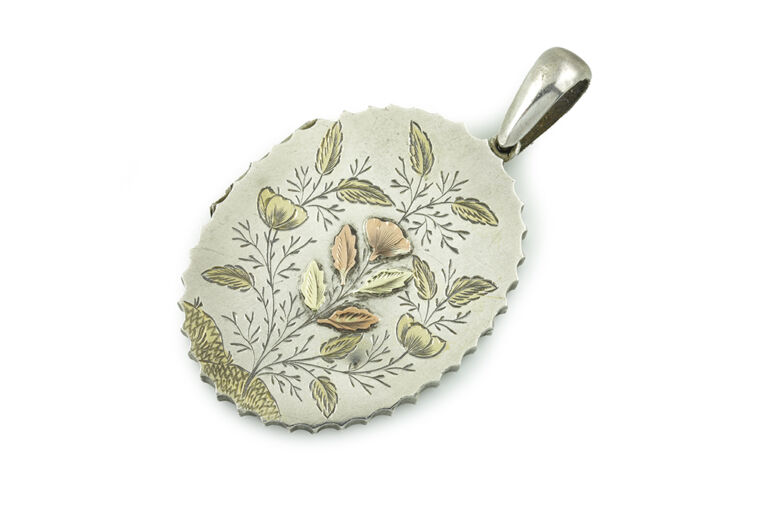

£425.00
Reference: SJ-SIL-P-270
Chester hallmark, 1880.
A large late Victorian oval silver locket, secured with an articulated bale, the front embellished with a hand engraved floral study of gold-coloured flowers and leaves with further applique work, the whole jewel completed with a bloomed finish.
Blooming was a popular finishing technique for gold jewellery from 1870 to 1890 and was first documented in 1853, and as the present example attests, also carried out on silver. The means for creating a bloom finish involved dipping the article into a boiling mixture of hydrochloric acid (muriatic acid), saltpetre (potassium nitrate), salt and water. This process burned off any alloys on the surface resulting in an alloy-free, thin layer of soft, pure metal. This surface layer was dotted by an infinite number of microscopic pits or holes which caused the matte sheen. The effect is reminiscent of the soft skin found on a peach. Dipping the item into the boiling mixture was referred to as colouring (for gold), and the resulting sheen was termed bloom.
The presence of a Chester Hallmark for a Birmingham-made jewel is easily explained. When Birmingham manufacturers found their local assay office overloaded with consignments, they would resort to the next closest; Chester, to have their goods hallmarked.
We are happy to reserve this item for your viewing in our Wells store. Please leave us your details and availability below and let us handle the rest.